About us
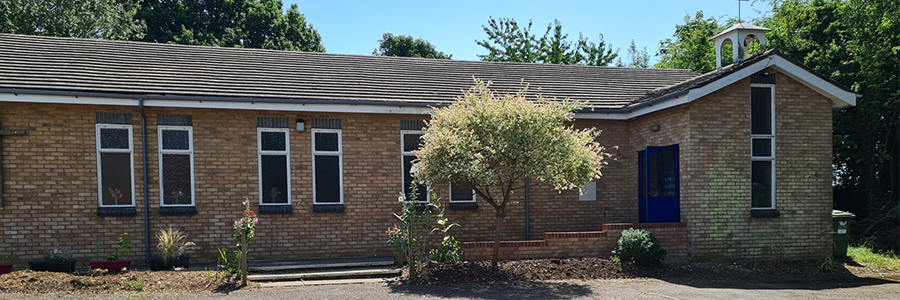
Ministry team:
Parocial Church Council (PCC):
Rev. Heather Graham
Rev. Melvyn Bleakley
Rev. Ian Fishwick
Rev. Lucy Green
Jenny Roughan
Rowena Harrison
Hilary Nohavicka (Safeguarding)
Paul Nye (Church Warden)
Hilary Perowne
Paul Perowne (Church Warden)
Tara Roberts
Helen Bradley
Paul Turner (Finance)
Rachel Woonton (Secretary)
Church hall
Located immediately behind the church buidling, our church hall is spacious, well equipped, and a great venue suited to all types of events.
It offers:
-
A modern building in a quiet, convenient location
-
A large, on-site car park.
-
A large, well-equipped, and well-maintained catering kitchen with a serving hatch onto the main hall.
-
Central heating
-
Disabled access
-
3 toilets, including one that is wheelchair accessible
-
Space for up to 100 people
-
Alcohol may be consumed on the premises (but not sold without the relevant license)
-
An ideal space for BBQs, treasure hunts etc. It backs onto a large meadow with a basketball court.
Hire Fees
The hall is available for one-off and regular bookings.
For terms, conditions and details on how to make a booking you can see and download our St James’ Church Hall Hire Information terms and conditions document here.
To check availability for our Church Hall, check our Church Calendar. Church Hall bookings are shown in red.
Enquiries
For all enquiries, please contact St James Church Hall Coordinator Hilary Perowne, hilmad1842@gmail.com or 07973 770180
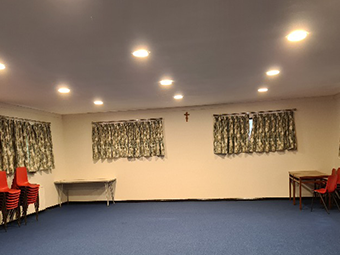
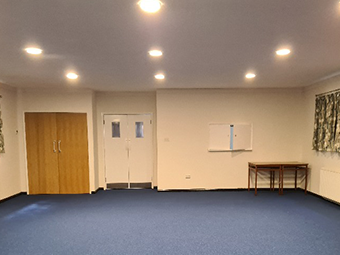
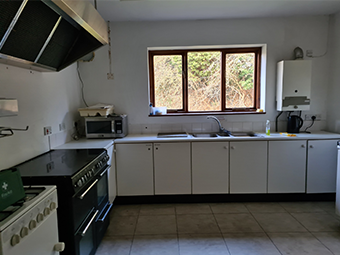
Who was St. James?
-
St. James was the first disciple called by Jesus along with his brother John. He is known as St. James the Great, to distinguish him from James the brother of Jesus and a leader in the early church. In those days 'Greater' meant older or taller, rather than more important.
-
James was one of the sons of Zebedee and Salome. He and his brother John were nicknamed "Sons of Thunder" by Jesus
-
Tradition says that St. James preached the gospel in Spain, as well as in the Holy Land; he was killed under orders from Herod Agrippa, and his disciples carried his body by sea to Iberia, then took it inland for burial at Santiago de Compostela.
-
The Camino de Santiago known in English as the 'Way of Saint James' is a network of pilgrims' ways leading to the shrine of Saint James. Many follow its routes as a form of spiritual path or retreat for their spiritual growth.
The symbol of St. James
The traditional symbol of St. James is a scallop shell, which is why our logo is based on the scallop shell. This was because St. James was a fisherman by trade until he left his family to follow Jesus. By doing so, his life was changed forever. Instead of fishing for scallops, he was to become, in Jesus' words "a fisher of people".
In the porch, you will see a wooden sculpture in the shape of a scallop shell.
History of St. James Church
There has been a St James the Great in Downley since 1874.
|
1874 - 1939
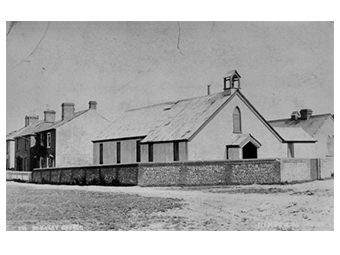
The present church building is the second church on this site and the third St. James in Downley.The 1874 church was a wood and corrugated iron building on the corner of Narrow Lane and Commonside. By the 1930s it had deteriorated to the point that a replacement was proposed. The original site was deemed to be too small and Sir John Dashwood offered the new site at the top of Plomer Hill.
|
|
1939 - 1975
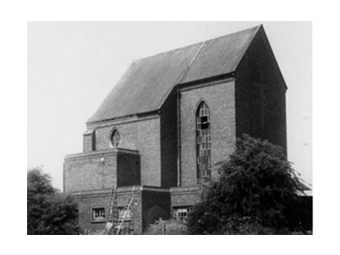 By 1938 the villagers ( about 250 then) had raised £3,200 to build a large and impressive new church. They had only built the sanctuary and chancel when money ran out and the war stopped everything. A temporary wooden wall closed the west end. By 1938 the villagers ( about 250 then) had raised £3,200 to build a large and impressive new church. They had only built the sanctuary and chancel when money ran out and the war stopped everything. A temporary wooden wall closed the west end.
In fine, warm weather the church was fine but it was cold, draughty and damp for most of the year. Experts were invited to analyse the problems and propose solutions. Obviously the temporary end wall caused most of the cold and draughts but the damp was caused by the original use of untried and unconventional wall construction methods.
The situation was becoming critical in the 1960s. The existing technology could not fix the damp problem and just one design for completing the building made any sense. This was by Anthea Hardy, a local architect who suggested an A-shaped roof over the existing building. A good plan but unaffordable.
The people of St. James' do not give up easily and in the 1970s explored a range of joint projects with local authorities and the surrounding churches. After several years of discussion a plan emerged with the Roman Catholics who had been using the St. James' old hall as a mass centre. The old church would be demolished and a simple prefabricated church erected. The next hurdle was to convince both Anglican and Roman Catholic authorities that the plan was viable. Fr. Day for the Anglicans and Fr. Griffiths ( later Canon) for the Roman Catholics were the main negotiators. With general agreement to proceed, the Anglicans needed permission to demolish the old building not a trivial task as this required an "order in council" signed by the Queen (on 12 June 1975). On the Anglican side a decision to group Downley with the adjacent High Wycombe parish and provide a higher specification vicarage complicated the decision making process. The next critical step was to get planning permission from the local council. Our application was presented in January 1975. To our horror it was rejected on the grounds that a prefabricated building was not appropriate on a prominent hilltop site. At this point enter David Copcutt who was hopping mad that years of hard planning had ground to a halt. Using his professional skills and a little help from other professionals he produced a set of plans for a simple brick building using standard house building materials. These plans were passed just 8 weeks after the initial rejection. God really does work in mysterious ways!
|
|
1975
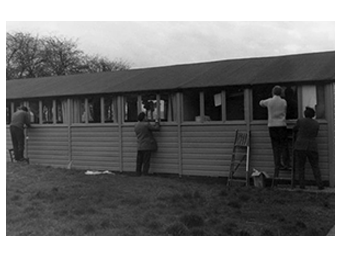 1975 was a year of feverish activity. David Copcutt used his knowledge of local builders to secure materials and labour at favourable rates. A team of volunteers stripped any potentially useful materials from the old church. The "Order in Council" was signed by the Queen and within minutes demolition had started. With David as project manager work proceeded rapidly with the laying of the foundation stone on 17 July in the presence of two bishops numerous clergy and a large congregation. 1975 was a year of feverish activity. David Copcutt used his knowledge of local builders to secure materials and labour at favourable rates. A team of volunteers stripped any potentially useful materials from the old church. The "Order in Council" was signed by the Queen and within minutes demolition had started. With David as project manager work proceeded rapidly with the laying of the foundation stone on 17 July in the presence of two bishops numerous clergy and a large congregation.
The new church used the substantial foundations of the old building and incorporated the original 1939 foundation stone, the bell from the 1874 church, an original back door and some paving stone. Later in the building process Anglican and Roman Catholic volunteers were able to assist with painting, floor laying and electrical wiring. During the construction, services continued in the old wooden hall and local headmaster, Mr Burrows allowed the Sunday school to use one of his classrooms. It was a race against time to be ready for the dedication service on 19 December. The whole project was funded jointly with the Roman Catholics by local gifts, loans and fundraising.
|
|
1976 - present
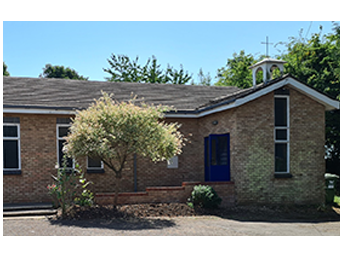 Volunteers used the consecrated altar tops from the older church to make the dominant stone cross inside. Early gifts to the new building included abstract "Stations of the Cross" by Dom. Placid of Nashdom Abbey joined later by a set, carved in relief on wood by a local violin maker. A new font was urgently needed. Volunteers used the consecrated altar tops from the older church to make the dominant stone cross inside. Early gifts to the new building included abstract "Stations of the Cross" by Dom. Placid of Nashdom Abbey joined later by a set, carved in relief on wood by a local violin maker. A new font was urgently needed.
Contact with Wycombe College (now Buckinghamshire Chiltern University College) revealed that they would love to create something simple, stylish and modern. A few years later two more students designed our stained glass windows. With help from other college departments and two generous donations the designs were installed. Other important works included the new vicarage and our splendid new hall.
|